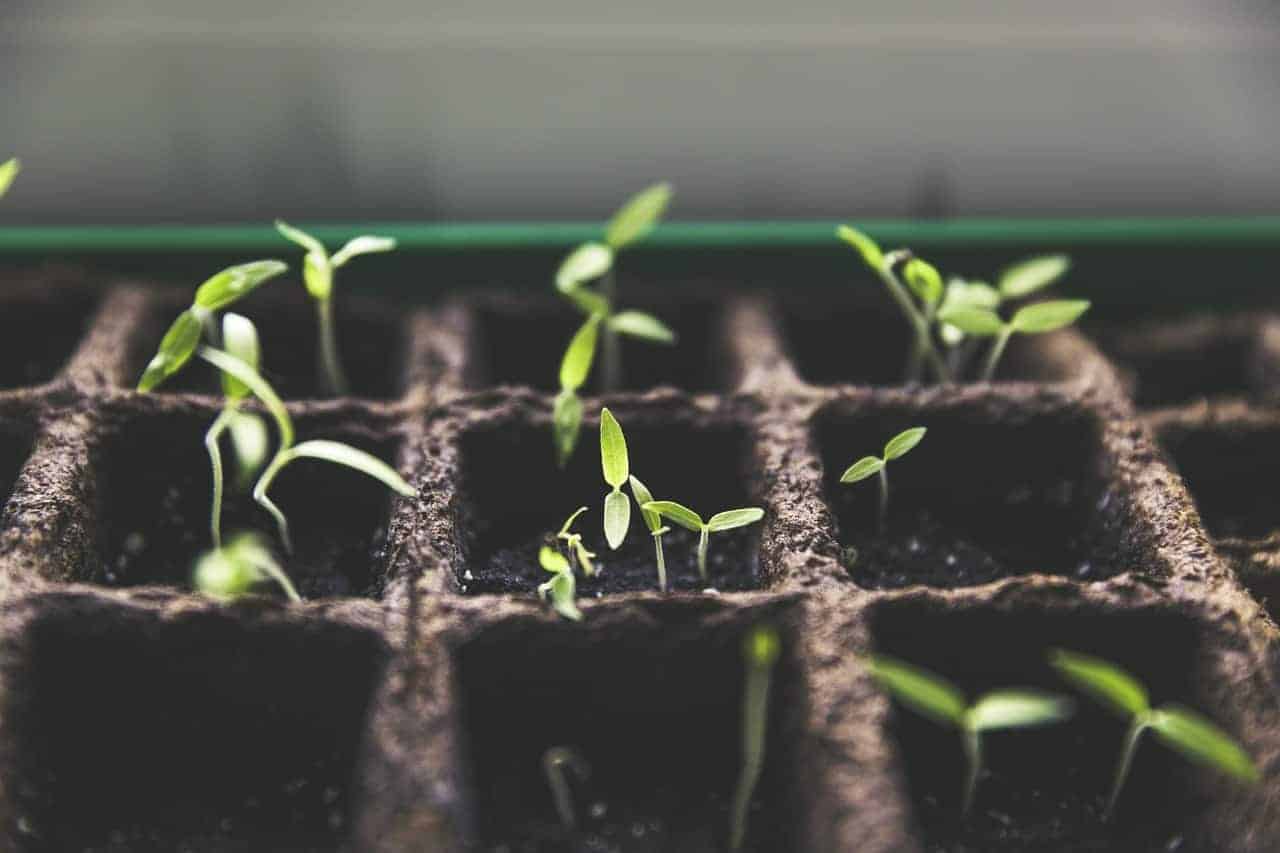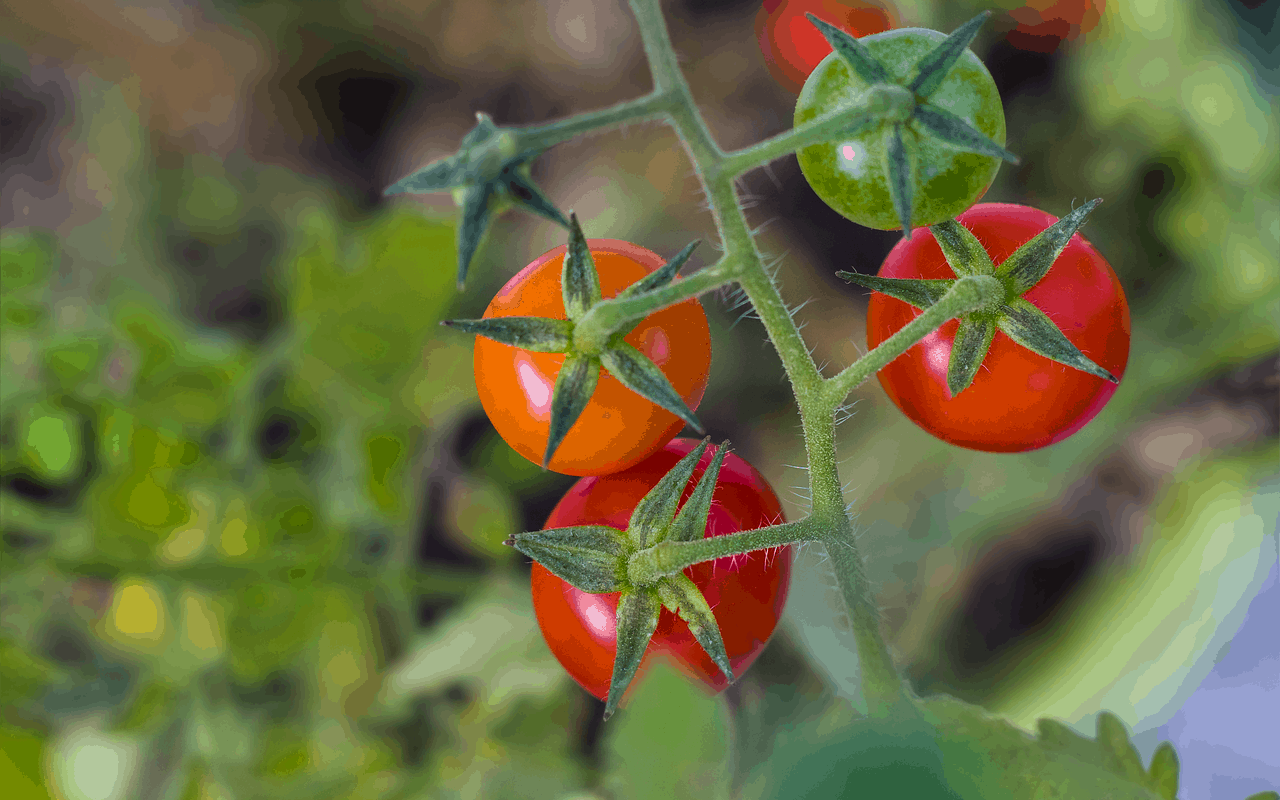“Do what you can with what you’ve got” is an adage I follow in many aspects of my life, but it’s especially true with gardening. Nobody has the perfect garden, and most of us are not even close to what we’d consider the perfect garden for us. And when you want to grow tomatoes but have limited or no space to put them with enough sun, you just have to do what you can with the garden you’ve got. Fortunately, there is hope for the shade garden.
Tomatoes typically need at least 6 hours of direct sun every day, but can adapt to growing in the shade. Typically, tomatoes grown in shade will be more leggy as they try to stretch to reach the light. They will also have a small fruit set. But the biggest difference is that tomatoes will take longer to ripen. Therefore, the best results come from growing small varieties like cherry tomatoes, but you can also have success in partial shade with larger tomato varieties. It’s important to keep other factors like water, nutrients, and air flow as optimal as you can in order to maximize tomato health and yield in the shade.
On this page:
Light Requirements for Tomatoes
Tomatoes grow best in full sun, and it’s recommended they get a bare minimum of six hours of direct sun per day, but you can get away with less sun. If you are thinking about where to plant tomatoes in your garden, the ideal location would be in the middle of a yard or along a south-facing fence or wall. The worst location would be against a north-facing wall or fence, or under a tree canopy.
However, as I will get into later, you can still have success with tomatoes in shade, but you should have realistic expectations about yield.
Good Light Is Not Critical for Tomato Seedlings
 If you decide to start your tomatoes indoors, try to get adequate light for them in their early stages of growth, but don’t fret if your tomato seedlings are leggy. Tomatoes naturally grow as a sprawling vine, and can produce roots all along their stem.
If you decide to start your tomatoes indoors, try to get adequate light for them in their early stages of growth, but don’t fret if your tomato seedlings are leggy. Tomatoes naturally grow as a sprawling vine, and can produce roots all along their stem.
If you do have leggy seedlings, when you go to transplant them, cut off some of the lower leaves and plant your tomatoes deep, allowing a few inches with leaves on top. Even if your tomatoes aren’t leggy, I always recommend this way of transplanting tomatoes since the extra roots mean a more secure base for your tomato plant and also more opportunities for taking up water and nutrients.
What Happens When You Grow Tomatoes in Shade?
Sunlight is important for leafy plant growth, and is especially important for stimulating flower/fruit production, and finally ripening fruit. This means that anything less than six hours will negatively impact your yields and ripening time.
If you grow a tomato plant in partial and especially full shade, expect your plant to grow leggier than normal; that means more gaps between each leaf node and truss of tomatoes. In full shade, you will also get fewer flowers.
 But the biggest difference you will notice is that it takes much longer to ripen the fruit you actually get on your tomatoes. A tomato fruit’s development is powered by the leaves of a tomato plant, which act like little solar panels. If there is no direct sun, it will reduce the overall amount of energy your plants will get, which means less energy going toward developing and ripening the fruit.
But the biggest difference you will notice is that it takes much longer to ripen the fruit you actually get on your tomatoes. A tomato fruit’s development is powered by the leaves of a tomato plant, which act like little solar panels. If there is no direct sun, it will reduce the overall amount of energy your plants will get, which means less energy going toward developing and ripening the fruit.
This is why I recommend cherry tomatoes to start with if you want to grow in the shade. Cherry tomatoes are often so prolific and ripen much faster than other varieties that you can have successful harvests in even full shade, but you will have to wait a bit longer before eating your first ripe tomato.
One thing to note is that shade will not affect pollination. In fact, it may even be beneficial during the peak of summer, as extremely hot temperatures can lead to pollen sterilization and therefore less pollination. Gardeners who live in very hot climates will even use shade cloth to purposely block 20%, 30%, 40% or even 50% of the sun’s rays to protect their vegetables.
The Bright Side – Growing Tomatoes Successfully in Shade
So yes, you can definitely grow tomatoes in shade, but you have to lower your expectations a bit. At the very least, you should look at the estimated time to harvest or maturity date on your seed packet and assume you will have to wait at least a few weeks longer than that. That usually means avoiding the large beefsteak varieties which typically take a long time to ripen even in full sun.
Don’t let that deter you, though. You can enjoy respectable yields in partial shade even with medium-sized and somewhat large tomatoes. Check out the video below on someone who had success growing tomatoes in the shade with less than 4 hours of direct sun, including one that stays in heavily shaded, dappled sun all day:
I have also had success with tomatoes growing in partial shade, only around 3 or 4 hours of direct sun. Cherry tomatoes still produced like crazy. One thing to note is that when tomatoes grow under shady conditions, it’s easier for leaves to stay moist longer, which can make them vulnerable to disease. If you decide to grow tomatoes in the shade, make sure they are not crowded together, are kept pruned and have room for air flow to help dry off the leaves faster.
Choosing the Right Tomatoes to Grow in Shade
As mentioned earlier, you will have the best success with cherry tomatoes (and grape tomatoes). Choose any variety that is very prolific or has vigorous growth, like Sungold, Black Cherry, Cherry Cascade, Jaune Flamme, Minibel, and Sweet Million, and you might not even know the difference.
If you want to try your hand at larger tomatoes, people have had success growing Cherokee Purple, Early Girl, Dester, Celebrity, and various determinate/bush varieties in partial or full shade.
